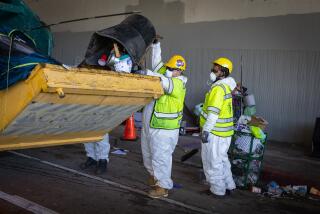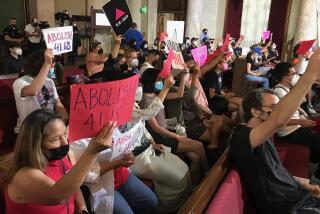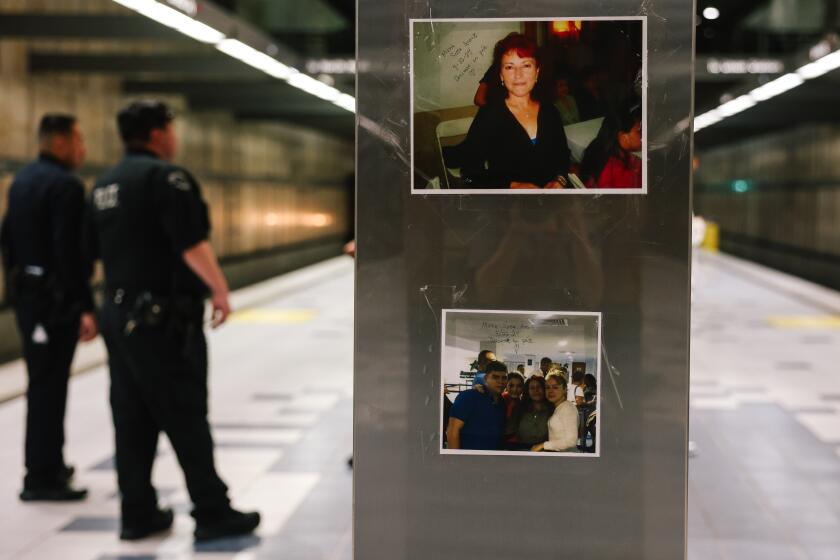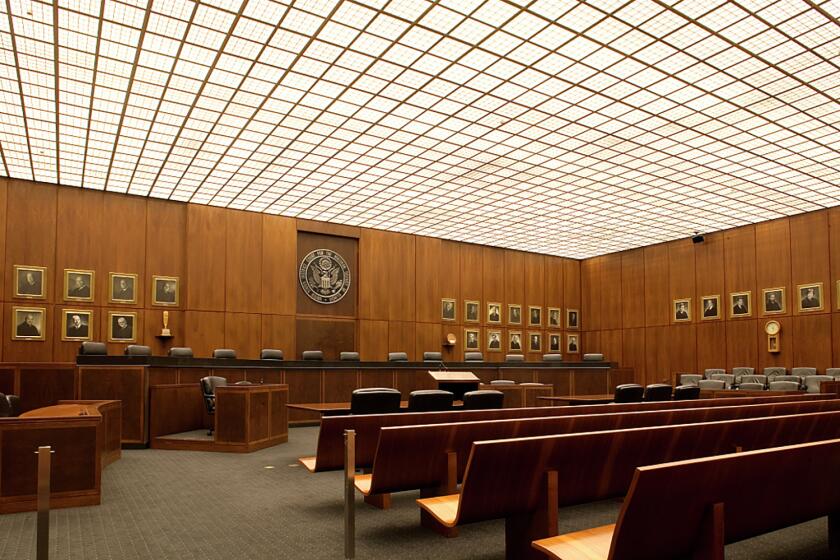Editorial: The homeless in the Ballona Wetlands should be moved, and given help
The Ballona Wetlands Ecological Reserve stretches from Westchester to the marina, 640 acres of precious and precarious wildlife habitat that over the years has survived the dumping of soil from nearby construction, trampling, littering and other indignities of urban encroachment. The California Department of Fish and Wildlife, a slew of devoted environmentalists and the Annenberg Foundation are all trying desperately to stave off any more degradation of the land and, eventually, restore it.
But a year ago, officials discovered at least 70 homeless people in 35 encampments who had pitched tents, made homes for themselves in bushes and coastal sage scrub, hauled in mattresses and set fires in cooking pits. A pitiful chain link fence that didn’t begin to enclose the entire perimeter of the vast space was hardly a barrier to people fending for themselves in the outdoors. The state — which owns the reserve — hired ecologist Richard Brody as a full-time manager, and he has spent hours scouting out encampments and, with the help of law enforcement, informing homeless people that they had, usually, 72 hours to leave. Today, there are just several encampments remaining, he says. A total of 15 tons of trash was removed by clean-up crews over the past year.
No one relishes evicting desperate people from their makeshift nests. Among other things, it runs counter to the well-worn meme of homeless advocacy in L.A. County that if there are not enough shelter beds for all of the estimated 36,000 homeless people in the county, then they shouldn’t be evicted from the outdoor spaces that they manage to find for themselves. The city of Los Angeles is not allowed to roust homeless people sleeping on public sidewalks at night, for instance, nor may it prohibit them from living in their cars on public streets.
But the wetlands are a different matter. They are so ecologically fragile that they are closed to the public; people can tour them only with an authorized guide. Trampling the ground and destroying vegetation leaves dirt too compacted for creatures that burrow and wipes out bushes and grasses for foraging by small birds and other animals. The state has made a commitment to preserving Ballona, one of Southern California’s few remaining wetlands, and restoring it as a rest stop and fueling source for birds, a nursery for fish and an ecosystem that cleanses and purifies the water that runs out into Santa Monica Bay. To restore it requires people to keep off it.
The difficult question is not whether to remove homeless people from Ballona but how to help get them services in an area low on shelters and transitional housing. In Ballona, when the homeless are given notice to leave, they often simply vanish, moving on to parks in Westchester or streets in Venice or even making their way downtown to skid row. Sometimes they come back, hoping to elude authorities in the vast wetlands.
When homeless people are evicted, the city should offer them services or try to house them, if only temporarily. That’s generally what happens when the homeless are moved off an L.A. hillside or out of Union Station. In Ballona, when Brody had to evict homeless people, he often brought along a volunteer advocate who came equipped with a list of resources, gift cards to McDonald’s and vouchers for a motel stay.
But they certainly could have used the professional intervention of the Los Angeles Homeless Services Authority, a joint agency of the city and county. Jeanette Rowe, director of the authority’s outreach services, says her workers would have been there if they had been contacted and granted permission from the state to be on the reserve.
Of course, county outreach services are stretched thin — 16 staffers to work with homeless people in 400 locations in the county each month. But now Rowe has pledged to contact Brody and to send a team of workers to encampments with him. That’s great. Those workers can supply bus tokens and vouchers for emergency housing. They’re practiced at persuading people to accept help. Most of the time they’re not successful at convincing people to seek counseling or treatment or to stay in transitional housing — but sometimes they are. Still, whenever the homeless are evicted, they should, at least, be offered an alternative to another night outside on the ground.
Follow the Opinion section on Twitter @latimesopinion
More to Read
A cure for the common opinion
Get thought-provoking perspectives with our weekly newsletter.
You may occasionally receive promotional content from the Los Angeles Times.






